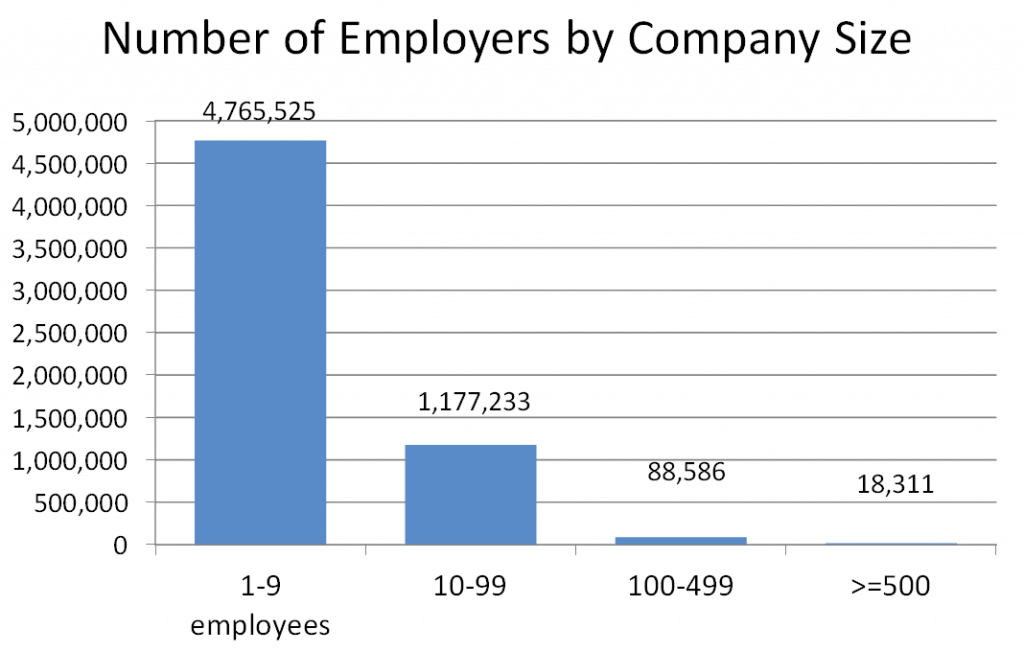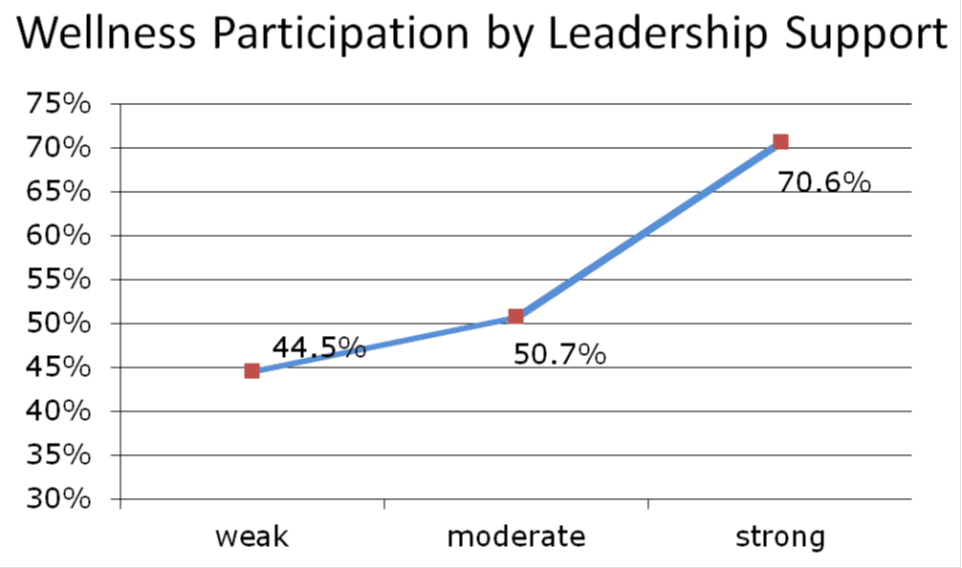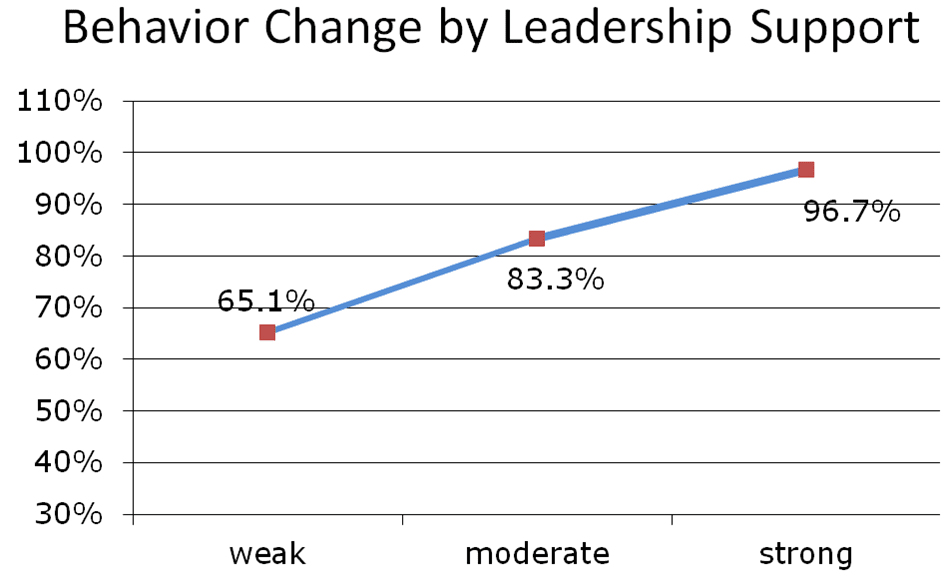Why Small Business Wellness is the Future-Updated 2024

In 2011, the first research paper that demonstrated how small business wellness can impact the health of employees was published. The wellness program offered at Lincoln Industries was evaluated for three years.
During that time, employees were able to significantly reduce systolic blood pressure, diastolic blood pressure, and improve flexibility. Despite having just 440 workers, nearly all Lincoln Industries employees participated in the wellness program. This company was able to create a worksite culture of health that resulted in a healthier, more productive workforce.
Another study was conducted that compared the health of these employees with the health of other employees in the Lincoln, Nebraska area. This second study was a way to compare the health of the employees of this small business with similar employees of other businesses that did not have wellness programs.
It was kind of like comparing one company to the entire community that surrounded it. Physical health, mental health, and healthy behavior were significantly greater for Lincoln Industries employees than they were for other employees living and working in the same community. This study strengthened the argument that wellness programs can be effective in small businesses.

A third paper was completed a year later. The impact of the WellSteps small business solution from five different small businesses was reported. Three of these companies had fewer than 50 employees. The results that were impressive.
Despite the fact that each of these five small businesses was located in different parts of the country and within different industries, they were able to demonstrate positive wellness outcomes. Exercise and dietary behaviors significantly improved across the five companies. Significant improvements in health perception and life satisfaction also resulted.
These three studies were some of the first ever published on the ability of wellness programs to improve the health of employees of small businesses. For many years we have had evidence that wellness programs in large corporations can be effective, but now we have evidence that small businesses can also benefit from having a comprehensive wellness program.

This research give us confidence that the wellness solutions we have been offering to small businesses are, in fact, working. We now know that a well-designed wellness program can improve employee health behaviors, lower elevated health risks, and improve the overall health of small business employees.
There are a lot of reasons why wellness programs can not only function in small businesses but can indeed thrive in these companies. These small business case studies give us a glimpse into a future where small businesses start using wellness programs as a core business strategy. For decades, large corporations have been offering to help their employees stay healthy by offering comprehensive wellness programs. Today, small businesses are the new frontier of workplace wellness.
7 Reasons Why Small Business Wellness is the Future
1. Small business wellness has advantages
Small businesses have a lot of advantages over larger corporations. Small businesses are more nimble, they can react more quickly to changes in the market, they can produce new products and services on a faster timeline, and they are free from the layers of regulations and bureaucracy that encumber larger corporations.
Most small businesses are still family-owned and even if they are not family-owned they still behave like families. In a small business every employee is important. “We’re family” is a common way small businesses describe themselves. Because they act like families, employees have a sense of belonging in these companies.
Morale is typically higher because employees know that their boss cares about them and knows them personally. Where wellness programs struggle to gain traction in large corporations, they typically flourish in small businesses.
Participation rates are generally higher, and the level of engagement in wellness programming is better in small businesses. In small businesses, wellness programs are easier to organize and easier to administer.
2. We are a country of small businesses

Data show that 99.7% of all businesses in the United States have fewer than 500 employees. Of all the people working in the United States, 74% of them (172 million people) work in businesses with fewer than 500 employees.

Worksite wellness programs may have originated in the large corporations of America, but the size of the small business community suggests that wellness programs have only just begun to scratch the surface. All Americans will have better chance to improve their health once wellness programs become common in small businesses.
3. Small business leadership is more visible
A few years ago Kaiser Permanente hired WellSteps to train all of its insurance brokers on wellness best practices. As a reward for completing the training each broker could offer the WellSteps small business solution to any of their groups.
We carefully measured leadership support and carefully tracked wellness program participation and individual behavior change. Small businesses have many unique characteristics and leadership support for wellness can vary greatly between groups.
We quickly discovered that businesses that had strong leadership support for wellness had significantly better participation and dramatically better outcomes. You can see these differences in the graphs below. Small businesses that have strong wellness leadership had almost twice the program participation. Behavior change is also more likely with strong leadership.


Strong leadership support for wellness programs is more powerful in small businesses that it is in large businesses. Leaders of small businesses are seen by all employees. They interact with employees more often and they have much more involvement in the day-to-day operations.
Small business leaders can generate strong social support for wellness programming. Because they are more visible, their participation in the wellness programs is seen by all. Lastly, small businesses that have leadership support for wellness more often have effective and well-functioning wellness committees.
Show me a company with a functioning and strong wellness committee and I’ll show you a company that is going to experience positive wellness outcomes. On the flip side, small businesses that have poor wellness leadership will struggle to obtain positive wellness outcomes.
Getting leadership support is tricky. Many leaders claim they have valid reasons to not support wellness. In this brief video, you will learn how to help leaders overcome many of the barriers they face when trying to support wellness.
4. Most brokers work with small and mid-size businesses
Insurance brokers and consultants are facing more competition for clients than ever before. Changes to the insurance industry associated with the Affordable Care Act mean that brokers need additional training and expertise. That expertise now extends into the world of wellness.
Small businesses expect their brokers to understand the insurance industry and to advise them on the best ways to start and administer a worksite wellness program. Those brokers who work with competent wellness vendors and who understand wellness best practices will gain a clear competitive advantage.
They become trusted advisors. Since wellness is here to stay, brokers who understand and promote workplace wellness will have more business and keep their clients longer.
5. Absenteeism has a big impact on small businesses
Absenteeism is defined as being absent from work and still getting paid. This only impacts salaried employees. Hourly employees don’t cost money when they are absent because they don’t get paid. But any absenteeism in a small business is a big deal.
In small businesses, many employees serve multiple roles within the organization. When a small business employee is absent, work requirements cannot always be absorbed by others because they may not have the skill set or the time to complete the needed work. Absenteeism in a small business has a much more profound effect on the bottom line than it does in a large organization.
Absenteeism in a large business is not as painful. With more employees the absence is more easily absorbed. With more employees, there is more duplication of efforts and abilities. With more employees there is rarely just one person, who is the only person, who can complete certain tasks. Perhaps one of the most important outcomes of an effective workplace wellness program is its ability to reduce employee absenteeism due to illness.
In 2001, a comprehensive review was published in which every study ever completed on the ability of worksite wellness programs to reduce employee absenteeism. Since then, we have learned small businesses are the perfect place to benefit from reduced absenteeism.
6. Small businesses can now self-insure
It used to be that only large companies had the resources and size to self-insure the medical costs of their employees. This is important because companies that can self-insure spend less on healthcare costs. Companies that self-insure stand to gain more from having a worksite wellness program because any savings in healthcare costs that result from the program go directly to the company rather than to an insurance carrier.
Today, businesses as small as 50 employees can become self-insured. Because of that, small business wellness can now experience a financial return on investment that is similar to that of larger companies that are self-insured.
7. Small business wellness is now affordable
Surveys and interviews report that in large companies the cost of worksite wellness is between $150 and $350 per employee per year. These large worksite wellness programs generally require full-time wellness staff, facilities, equipment, and generous incentive packages.
Development of new technologies, web-based approaches, and the ability to communicate via mobile devices has greatly reduced the cost of effective wellness programs. The WellSteps small business solution that is described in the published research at the beginning of this blog costs less than $100 per employee per year. What used to be an employee benefit for only the largest and most powerful corporations is now available to small businesses and at an affordable price.
By changing medical plan co-pays, deductibles, and premiums, brokers can find creative ways to lower this cost even more. In some cases, brokers may even supplement the cost of wellness for the small businesses they serve.

So What:
Published scientific research shows that small businesses can use worksite wellness programs to improve employee behaviors and lower elevated health risks. The staggering number of small and mid-size businesses in the United States suggests that small business wellness has the potential to touch almost every working adult.
For all of the reasons described above, it’s likely that the number of small businesses doing wellness will increase dramatically. To show you exactly how this can work in a small business, the Wellness Councils of America published a white paper on the wellness efforts of one small business.
With just 22 employees, the Borislow Insurance Agency was able to make worksite wellness a key business strategy within their organization. You can read the case study here.








I have a medicine and functional medicine practice. I would like to offer small business wellness in my community. Is there anyway I could purchase your program. Would you train my staff and myself?